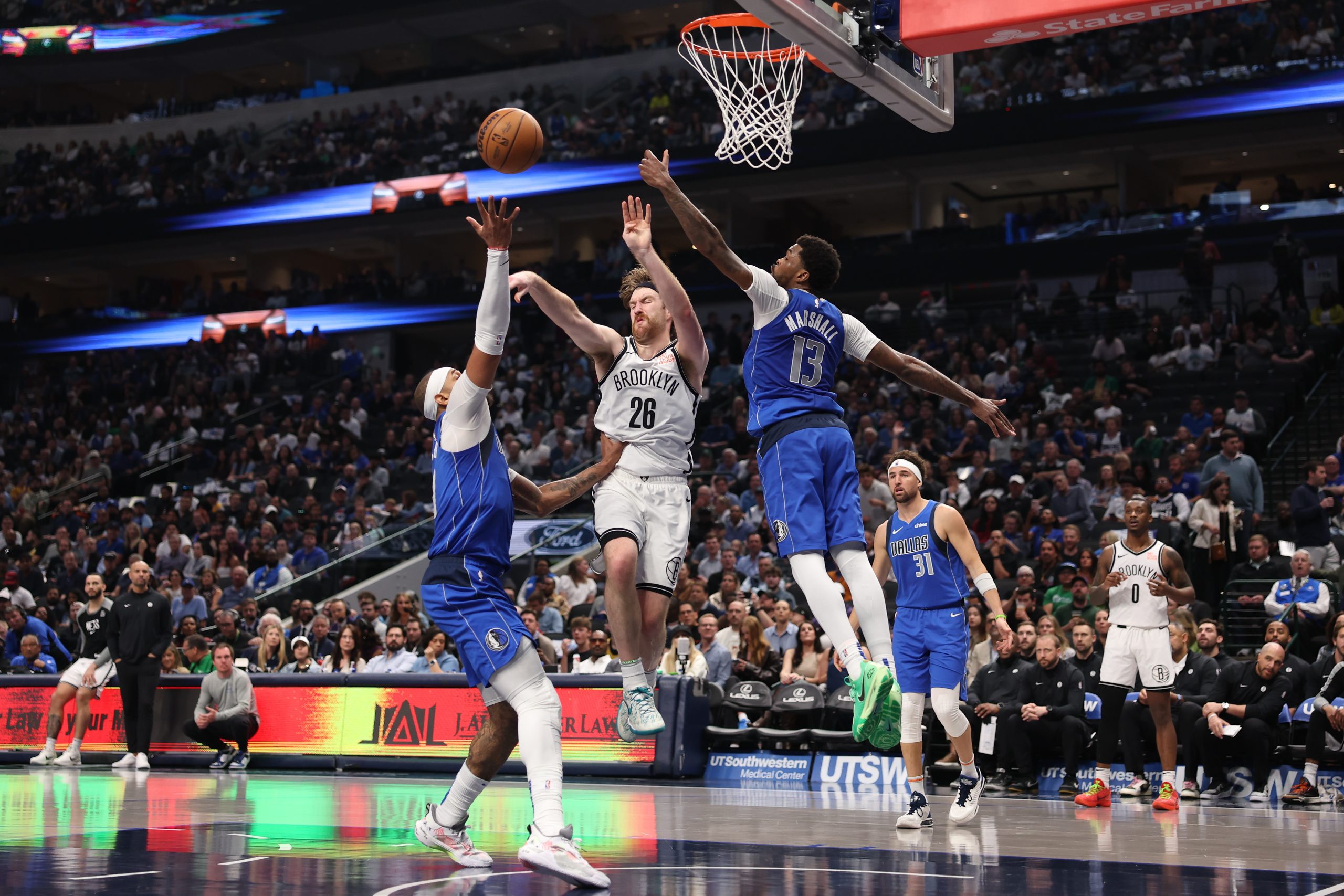There’s no denying it. The Boston Celtics‘ win over the Brooklyn Nets on Sunday evening was choppier than the entire Saw franchise. And for stretches, we saw a return to isolation-heavy basketball. However, the Celtics didn’t completely abandon their offensive principles, as we could see by the 3-man game they deployed around the perimeter throughout the fourth quarter.
In basketball nomenclature, the 3-man game Boston executed is often known as ‘wide’ but is quickly becoming referenced as ‘quick.’ Regardless of what naming scheme you prefer, the fact is, the Celtics have the scoring gravity and decision-makers to execute their ‘quick’ offense at a high level by throwing in multiple wrinkles to keep the defense on their toes.
Put simply, a ‘quick’ action is an off-ball screen set on the weak side of the court as the ball handler enters the team’s half-court offense. The screen receiver will then come off the screen looking to receive the ball. Plays out of this playbook are designed to allow the offense to flow into a read-and-react system, with the idea being that the early off-ball screen has forced the defense into rotation and created gaps to either drive or shoot from.
As with all NBA teams, the Celtics have looked to put their own spin on this action, aiming to keep the defense guessing after the screen receiver is in possession of the ball — if they ever receive the ball!
The above action is probably a good starting point for looking at how the Celtics attacked out of quick actions. Initially, we see all the tell-tale signs of the wide/quick action unfolding — the off-ball screen for Malcolm Brogdon to get toward the top of the perimeter and the initial pass by Jaylen Brown.
However, the Celtics then flow into what appears to be a ‘get action’ (where the player who passes the ball then trails the pass to get the ball back via a hand-off), only for Brogdon to fake the hand-off and drive the lane. As you can see, the fake hand-off freezes Seth Curry for a split second, allowing Brogdon to utilize his explosive first step and lock him on his hip during the drive. From here, we see Brogdon engage the weakside low man (who is the default help defender) before swinging the rock to Al Horford, who is waiting in the corner.
Above, we see a slightly different variation out of the Celtics ‘quick’ action, as this time, rather than coming off the screen to receive the ball, Jayson Tatum flows into an on-ball screen of his own, forcing Kevin Durant and Kyrie Irving to switch, thus giving Tatum a mismatch.
Instead of popping onto the perimeter and calling for the ball to attack Irving, Tatum seals Irving on his hips and then explodes towards the rim, essentially operating as the roll-man, allowing Derrick White to hit him with a pocket pass to generate an uncontested dunk. Credit to Nic Claxton here, he was put in a bad position with very little upside, either he helps off of Horford to contest Tatum at the rim, or he removes the pass to a sharpshooting big in the corner. Of course, if Claxton had rotated over, Horford probably drains the jumper.
Here, we see one of the Celtics’ bread-and-butter actions out of their ‘quick’ series, where the initial screen receiver comes off the screen and becomes the first screener in a strong side stagger action for the ball-handler.
Throughout the season, Boston has found great success with this variation, as it gives the team numerous options to play with. For instance, after setting the initial screen, Tatum can then become a ‘popper,’ a ‘roll man,’ or flow into some ‘veer’ offense (which is where a player sets an on-ball screen before setting an off-ball screen — usually a pin-down.) White could then become the roll man, a cutter, and so forth. While the ball-handler can use the stagger screen, weave between the two screeners to attack a gap, reject the screen, or simply pull up from behind the screeners for an uncontested jump shot — this action is quite versatile.
However, in this instance, rather than using either screen, Brogdon pulls the rock back and waits for the screeners to relocate, with White ‘L-cutting’ to the weakside corner and Al Horford shifting up to the wing, allowing Brogdon to penetrate and kick the rock to White for the easy trey.
The final variation we’re going to look at is having Tatum operate as a ‘ghost screener’ after coming off the initial ‘quick’ screen on the weak side. The idea here is that by setting a ‘non-contact’ screen, the defense will become a little confused and disjointed, potentially creating some space to drive, a mismatch, or a passing opportunity to the ghost screener, who could be a slot drive or shooting option.
In fairness, the Nets communicate exceptionally well on this possession, and no advantage is generated for the Celtics, but given the nature of the aptly named ‘quick’ action, there is still plenty of time to get into another set or to swing the rock around the perimeter while looking for gaps to attack.
Overall, the Celtics managed to win a game where they were clearly far from their best on offense, yet, it was the fourth quarter where we saw them implement a more structured approach to their half-court offense, and it worked wonders for helping them build a sustainable lead.
Hopefully, though, we will get back to seeing Boston’s diverse and exciting brand of offensive execution in the coming days, and then once Robert Williams returns, it will be time to take things to an even higher level.






